In Soviet Russia, Aircraft fly you!
A Brief potted history of the Antonov Aircraft Company
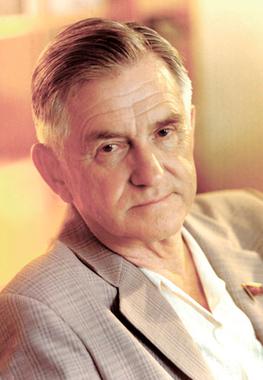 Oleg Antonov (1906 - 1984)
Oleg Antonov (1906 - 1984)
Technically no longer actually Russian, the Antonov Aircraft Company was founded under the umbrella of the USSR, the Union of Soviet Socialist Republics, controlled from Moscow by the Soviet government. Created by Oleg Antonov, who had worked with The Moscow Glider Company designing gliders (until one enterprising instructor hopped it to the West in one of their gliders, after which the factory was closed down and gliders banned in the USSR) and then in the Yakovlev Design Bureau where, during World War II, he designed military gliders (presumably the ban was lifted by Stalin in light of the war effort) including one which was apparently capable of lifting a tank!
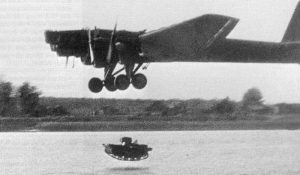
Strictly speaking though, the AN-40 Krylya Tanka (tank wings) was not a glider, in fact it was not even properly an aircraft, being an actual tank with detachable wings and tail. Antonov did however go on from such experimental ideas to become one of the USSR’s biggest (literally) aircraft manufacturers. They would be known as the company that built the largest and heaviest planes, not only in the Soviet Union, but in the world, and remain so, with their AN-225 Mryia, a six-engined monster that holds the current record, behind one experimental flying boat built by millionaire entrepreneur Howard Hughes, and the more recent Stratolaunch, which was retired from service on the death of the founder of the company.
As you might expect from a Russian aircraft manufacturer (the same, I guess, as you would also expect from a British or American or German one) Antonov have been, and continue to be instrumental in producing military as well as civilian aircraft. Perhaps rather amazingly, their first proper production powered aircraft, the AN-2, prototyped in 1946, is still in service today. In fact, production only ceased in 2001. The AN-2 is a biplane, rather unique for the time being made entirely of metal when most other designs, including the likes of the Spitfire and Hurricane, were at least partially made of wood. It is used by the military as well as in the field (sorry) of crop-dusting and firefighting, as an air ambulance and even a small troop carrier. Its toughness, ability to take off and land on very short runways and its lifting power have kept it in service for over seventy phenomenal years.

The trend for large aircraft kicked off in 1957 when Antonov designed the AN-10 and AN-12, themselves based on the popular AN-8 passenger aircraft, but which replaced that model’s twin engines with two more, making four in all. Of course, this was not necessarily anything new - the American Douglas DC-4 and DC-6 had been in service since the 1940s, and Britain’s Vickers Viscount and Vanguard were plying routes for the likes of British European Airways and BOAC, and even tiny Aer Lingus by the time the AN-10 made its debut. It had competition within its own sphere from the Ilyushin IL-18, launched a year previous, and which had better cargo capacity. The IL-18 became one of the most popular soviet airliners of the decade, oddly enough though being involved in far more accidents than its rival.
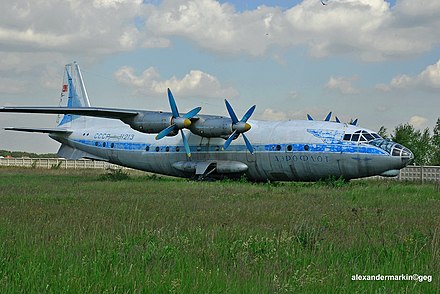
Unlike the doughty AN-2, the AN-10 lasted a mere fifteen years in civil service, as Aeroflot, the Russian state airline, retired its fleet in 1972 following a fatal crash which was traced to metal fatigue in the wings. By comparison, the IL-18 is still in service today, even if the number of aircraft still around can be counted on the fingers of two hands. Perhaps not surprisingly, the AN-10 was only operated by Aeroflot, while its military equivalent, the AN-12, served in the Russian Air Force. However, as a transport aircraft and in many variants, it far outpaced its predecessor, being operated by over twenty countries for civilian purposes and in the air force of almost thirty. Again, unlike the luckless AN-10, some models are still in service today.

Bigger is better, could perhaps be the slogan of the Antonov Company, and they certainly live up to that, right up to today. Each aircraft designed by them is literally bigger than the last, and the first real monster to see service was the AN-22, which at the time was the world’s first wide-bodied aircraft and remains the largest ever turbo-prop aircraft in the world. Unlike the AN-12, the AN-22 did not develop from a civil version; in fact, the only civil airline to ever operate one remains Antonov Airlines themselves, and they have only the one, with one leased to Air Sofia. The AN-22 was specifically built as what is known as a strategic airlifter, basically an aircraft to get men and material to battlefields and airlift supplies in for humanitarian crises. They were used during the meltdown in Chernobyl in 1986, in the invasion of Afghanistan and Angola, and the war in Bosnia, and were kept busy flying troops in to various former territories of the Soviet Union after the collapse of communism and the breakup of the USSR.
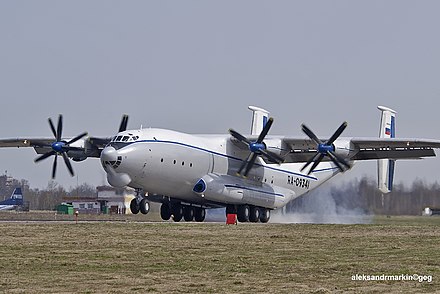
The AN-22 was the first of their aircraft (perhaps the first Russian aircraft but I don’t know) to have a twin tail, which helped its stability and performance, and though a passenger version was planned which would have, if realised, carried almost twice as many passengers as a Boeing 747, nothing came of the idea and the aircraft remained an exclusively military one. It could be, perhaps paradoxically, due to this that the AN-22 only suffered nine crashes, compared to the many in which its predecessor was involved, or it could be the fact that it was not sold for use outside the Soviet Union. Either way, up to this point it remained the Antonov aircraft with the best safety record.

Like all major aircraft manufacturers, Antonov moved into the jet arena but was slow to do so. While British and American jet aircraft, both civil and military, had been flying since the late forties and fifties, and Antonov’s main rival Ilyushin had the IL-62 in service in 1960, it was 1972 before the first jet-powered aircraft rolled off Antonov’s production line, this being the AN-72. In contrast to many western aircraft being made at the time - and even differing from the IL-62, which had four engines mounted at the rear - the AN-72 sported two large turbofan engines which sat above the wing, one of the few aircraft ever to use this design. The Boeing YC-15, which utilised a similar design, was never put into production, and most aircraft manufacturers preferred to sling the engines below the wing (as in the well-known and successful Boeing 737/707/747 aircraft, the Douglas DC-8 and later the Airbus models) or on or beside the tail (Boeing 727/BAC 1-11, DC-9, Lockheed Tristar, DC-10).
The positioning of the engines above the wing however allowed the AN-72 to take advantage of something called the Coanda Effect, which helped make it a reliable STOL (Short Take-Off Or Landing) aircraft, and maintained Antonov’s reputation for building aircraft that could operate from the shortest, most remote, most rudimentary airstrips. Briefly, the Coanda Effect uses exhaust gases from the engines blown over the wing surface to boost lift, something impossible on lower-slung or tail-mounted engines. Like most of the heavier Antonov aircraft, the AN-72 saw service both as a military and civilian craft, and in many roles, including air ambulance, VIP transport, cargo, marine patrol and cold weather support. The AN-72 is still in service today.

Cementing their reputation as the builder of the world’s largest aircraft, Antonov rolled out the massive AN-124 in December 1982, although the world outside the USSR only got to see it at the Paris Air Show three years later. The first, to my limited knowledge admittedly, Antonov (possibly even first Soviet) aircraft to have a front-loading cargo system whereby the nose lifts up as a door, the AN-124 can carry up to 150,000 kilos (by comparison, a 747 freighter can manage 140,000 ) and has a wingspan of 240 feet or 73 metres (that’s equivalent to having three Boeing 737s lined up, one behind the other, on both wings), the aircraft’s length being almost equivalent to its wingspan, at 226 feet or 69 metres. The AN-124 is also the first, possibly only Antonov aircraft to see service with UK operators, although any who operated this behemoth have since closed down, perhaps evidence that the demand for such a giant of the skies is not there.
The AN-124 remains the largest military transport in service, and is still being manufactured today with approximately twenty aircraft still in service. Not surprisingly, due to its massive size and niche requirements, there were no huge numbers of the aircraft ever built, but even with the one-off appearance of its intended successor, the AN-225, it is still the second heaviest cargo aircraft ever built, at 214,000 kilos fully loaded and 180,000 empty. This makes it almost twice as heavy as variants of the old reliable 747.
Interestingly, while most western manufacturers such as Boeing, Airbus, McDonnell Douglas and British Aerospace now concentrate almost exclusively on jet aircraft, Antonov continue to produce turboprop models, with the AN-132, a twin turboprop military version of the AN-32 first flying as recently as 2017, the AN-142, designed to take over from the ageing AN-30 making its maiden flight in 1997 and even the venerable AN-2, Antonov’s first real aircraft which originally saw service in 1946 being redesigned in 2013. Still, it can’t be questioned that their focus lies, like most aircraft manufacturers and as you would expect, in jets, and to that effect, as already mentioned, and as our last look at this company, they have built the largest aircraft in the world.
The largest. In. The world. No contest.
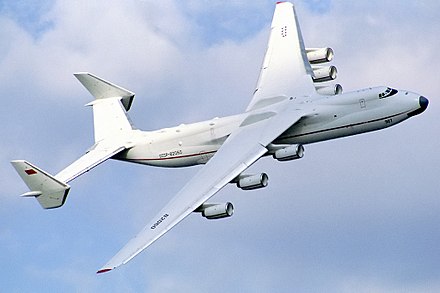
Its wingspan is a staggering 290 feet or 88 metres, almost fifty feet longer than the AN-124, and even unladen it’s heavier by far than its predecessor at full weight (295,000 kilos) while when fully loaded it struggles into the air dragging a weight of 640,000 kilos with it. Yeah, that’s over THREE TIMES the weight of the AN-124 at full capacity! They call it the AN-225 and it is a beast in any man’s language. Powered by six - count ‘em: six! - turbofan engines, three under each wing, it was built specifically to transport the Buran Spaceplane, Soviet Russia’s answer to the American Space Shuttle, and only one was ever built.
The geopositioning of Antonov has worked against it recently, as the Russian annexation of the Crimea in 2014 led to hostilities between the two nations, and as a consequence Antonov no longer worked alongside Russia. Over the period 2014-15, they produced a total of four aircraft, with none in 2016. In 2017 the state-owned arms manufacturing company Ukroboronprom announced the formation of the equally state-owned Ukrainian Aircraft Corporation, and Antonov was absorbed into this, effectively ceasing to exist as a separate entity.
While other Soviet manufacturers such as Ilyushin and Tupolev may have gone on to create the more popular and well-known Russian aircraft (including the workhorse Tupolev TU-154 and the supersonic Concorde equivalent the Ilyushin IL-86) Antonov always were and always will be known as the people airlines turn to when they want the biggest, the heaviest, the most rugged and the most reliable transport aircraft in the world.
And it all started with gliders…